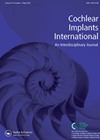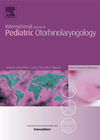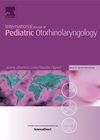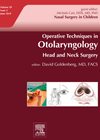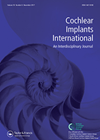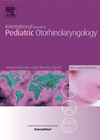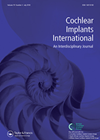
Journal Reviews
How interaural level differences differ between children with bilateral cochlear implants and their normally-hearing peers
A group in the Netherlands investigated interaural level differences (ILDs) in children who were bilaterally implanted with cochlear implants (CIs) and compared their performance to their normally-hearing peers. ILDs are used to localise sound and rely on the high-frequency cues....
Balloon Eustachian tuboplasty – is it time to start doing it in children?
Given the potential applications for balloon Eustachian tuboplasty (BET) in children, its uptake in most centres has been slow. The reasons for this are multifactorial. There are technical issues – the feasibility of obtaining the correct size balloon and manoeuvring...
Identification of congenital hearing loss in Saudi Arabia
It has long been recognised that timely recognition of congenital hearing loss allows for the morbidity of hearing loss to be minimised. Due to the difficulties with identifying hearing loss in babies, combined with readily available screening technologies, many countries...
The snotty child?
This article is interesting for those of us who see children regularly in secondary care but rarely see them with chronic rhinosinusitis. The authors remind the reader of the EPOS guidelines for diagnosis of CRS in children: two or more...
Which factors affect music involvement in implanted children’s everyday life?
During the last few years, cochlear implantation research has included music. Processing strategies and rehabilitation teams are now interested in music appreciation by implantees, as speech perception and production are no longer the only issues or targets. The present study...
Is the lack of sunshine the reason behind allergic rhinitis?
Deficiency in Vitamin D, an in vogue immunomodulator, has been shown in emerging data to have a substantial pathogenetic role in allergic related diseases, particularly asthma. The concept of a shared upper and lower airway has allowed the natural extrapolation...
Bone anchored implant stability predicted one week after implantation
Bone conduction (BC) devices can now be implanted as a single stage procedure with minimal soft tissue thinning to reduce the complications in the surrounding skin. The question of optimal loading time has to my mind not been answered. Here...
How young is too young for tympanoplasty?
This paper presents the largest series of pre-school age children undergoing tympanoplasty compared with older children. The authors have collected much prospective data on 259 children undergoing 284 surgeries so were able to perform multivariate analysis. The age groupings of...
How can we assess children with complex needs?
In the early days of cochlear implantation, children with additional disorders were being excluded as poor candidates whereas today a large number of children with complex needs are being referred for cochlear implant assessment. However, the related problems include difficulties...

